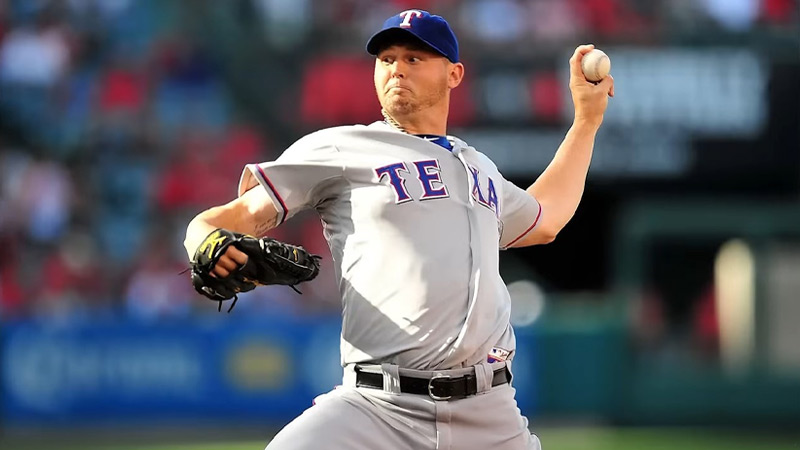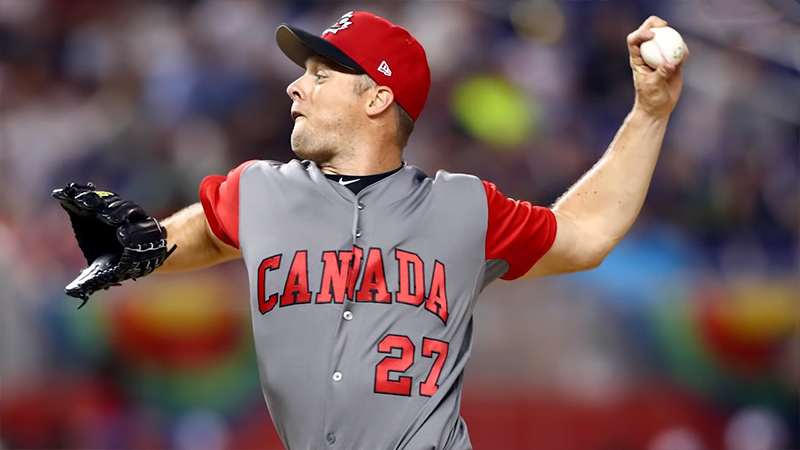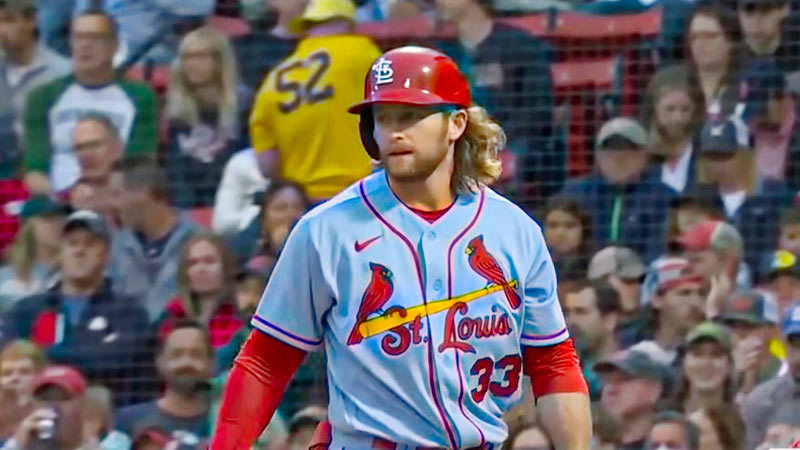The world of Major League Baseball (MLB) is not just about home runs and strikeouts; it’s also a complex ecosystem of contracts, rules, and options that influence player careers and team dynamics.
MLB options are a fundamental but often misunderstood aspect of these dynamics.
In this blog post, we’ll delve into how MLB options work, shedding light on how they impact both players and teams.
MLB options are like chess pieces in the grand strategy of professional baseball.
They provide the flexibility needed to balance player development with roster management, affecting the trajectory of budding talents and the competitiveness of teams.
If you’re a die-hard baseball fan seeking to grasp the intricacies of the game, this post will demystify the rules, misconceptions, and the pivotal roles that MLB options play in America’s favorite pastime. So, stay sharp.
What Are MLB Player Options?
MLB player options are contractual clauses that allow a player or the team to make specific decisions regarding the player’s future.
Typically, a player option enables the player to choose whether to continue their contract for an additional season, while a team option grants the team the same right.
Player options are usually included to provide flexibility and security for both parties. If a player has a good season, they might choose to exercise their option for another year, securing their salary.
Conversely, if a team wants to retain a player or renegotiate terms, they can exercise a team option. These options are essential in MLB contracts, influencing a player’s career trajectory and a team’s roster management.
How Do MLB Options Work in Baseball?
MLB options are crucial components of player contracts in baseball, providing flexibility and clarity for both players and teams. Here’s how they work:
Player Options

- A player option allows the player to decide whether they want to extend their contract for an additional season or not. This typically occurs at the end of a contract year.
- If a player is eligible for a player option, they can choose to accept it, in which case they remain with their current team for the additional year at the agreed-upon salary.
- The player’s decision to exercise their option is influenced by various factors, including their performance, market value, and personal career goals.
Team Options
- A team option, on the other hand, provides the team with the authority to decide whether they want to keep the player for an extra season or not.
- The team may choose to exercise the option, which means the player remains on the team for another year. If not, the player becomes a free agent.
- Teams often consider performance, financial constraints, and roster needs when deciding whether to exercise a team option.
Salary Implications
- The salaries for the additional season(s) in player and team options are predetermined in the original contract. This provides financial predictability for both parties.
- Player options typically involve the player’s consent to continue playing at the agreed-upon salary, while team options give teams control over salary terms.
Timing and Eligibility
- The timing and eligibility for options are specified in the player’s contract. This can vary from contract to contract, but commonly, options are exercised or declined at the end of the regular season.
- Eligibility for options often depends on a player’s service time or performance benchmarks, which may differ based on the terms negotiated in their contract.
MLB Option Rules

MLB option rules govern how player options are utilized in Major League Baseball contracts.
These rules ensure fairness and consistency in the treatment of player contracts and options. Here are some key points regarding MLB option rules:
Options Limits
MLB players can typically be optioned to the minor leagues multiple times within a single season. However, there are limits to the number of times a player can be optioned without their consent over multiple seasons.
The specific rules regarding option limits may vary, but typically a player can be optioned for three seasons. If a player has not used all their option years, they can also be optioned multiple times within a single season.
Out of Options
When a player has exhausted all of their remaining minor league options, they are considered “out of options.” At this point, the player cannot be sent to the minor leagues without clearing waivers.
If the player is claimed off waivers by another team, they must remain on that team’s MLB roster or be offered back to their original team.
Service Time Impact
A player’s service time in the major leagues affects their option status. Typically, if a player has less than five years of service time, they are eligible for minor league options.
However, players with five or more years of service time must give their consent to be optioned.
Optional Assignment Period
When a player is optioned, there is a specific window during which they must remain in the minor leagues before they can be recalled to the major league team.
This period is usually ten days for pitchers and 15 days for position players, although these rules can vary.
Player’s Consent
If a player has accrued at least five years of MLB service time or has been optioned to the minor leagues previously, they must give their consent to be optioned again.
This means that more experienced players have more control over their assignment status.
These rules are designed to balance the interests of both players and teams in MLB contracts.
How Many Options Does a Player Have?
The number of options a player has in Major League Baseball depends on several factors, including the player’s service time, previous option usage, and specific circumstances.
Here are some key points to consider:
Three-Year Limit
In most cases, a player has a maximum of three option years. This means a player can be optioned to the minor leagues in up to three different seasons without requiring the player’s consent.
Each season in which a player is optioned counts as one option year.
Service Time Threshold
A player’s service time in the major leagues impacts their option status. Typically, players with less than five years of service time can be optioned without their consent.
However, players with five or more years of service time must give their consent to be optioned.
Initial Options
When a player first joins the major league roster, they usually have three option years available. These options can be used at any point during the player’s initial five years in the major leagues.
Options Reset
If a player is optioned to the minor leagues for at least 20 days in a single season, that season does not count as an option year.
This “reset” mechanism provides some flexibility for teams and players in managing player development.
Veteran Players
For players with significant MLB experience, it becomes increasingly rare to have options remaining.
Once a player has accrued more than five years of service time, they are typically “out of options,” meaning they must clear waivers before being sent to the minor leagues.
The number of options a player has is typically three option years, with the ability to “reset” the count if they spend at least 20 days in the minor leagues in a single season.
The Impact of MLB Options on Players and Teams

MLB options have a significant impact on both players and teams, influencing player development and roster management in the league.
Here’s how they affect both parties:
Impact on Players
- Player Development: Options are essential for young and developing players. They allow teams to send players to the minor leagues to refine their skills, work on specific aspects of their game, or regain confidence without exposing them to waivers. This can be crucial for a player’s long-term success and career progression.
- Control and Flexibility: Options provide players with some level of control and flexibility in their careers. They can decide whether to consent to an option or not, depending on their experience and preferences. This gives players some say in their career trajectory and the teams they play for.
- Service Time and Free Agency: For players who are close to reaching free agency, options can affect the timing of their eligibility. If a player is kept in the minor leagues to manipulate their service time, it may delay their ability to reach free agency, which can have financial implications and affect their market value.
Impact on Teams
- Roster Management: Options are crucial for teams to manage their rosters effectively. They provide a means to shuffle players between the major and minor leagues to address injuries, performance issues, or roster needs without exposing them to waivers or releasing them.
- Financial Considerations: Options can also have financial benefits for teams. By optioning a player to the minor leagues, they can avoid paying the player’s major league salary, which is especially important for teams with tight budgets.
- Player Development: Teams use options to ensure that their prospects are fully developed before becoming regular major league contributors. This approach can help maintain the competitiveness of a team in the long run.
- Trade Assets: Players with options remaining can be attractive trade assets for teams. They can be included in trades with other teams that value the flexibility and development potential that options provide.
MLB options play a vital role in the delicate balance of developing players and managing rosters effectively.
Common Misconceptions About MLB Options
There are several common misconceptions about MLB options that can lead to misunderstandings about how they work.
Here are some of these misconceptions clarified:
A Player Can Only Be Optioned Three Times
While it’s true that players typically have three option years, it’s not limited to sending a player down only three times.
The three-option years refer to the number of seasons during which a player can be optioned without their consent.
In each of these years, a player can be optioned as many times as needed within the constraints of the rules. Also, a season does not count as an option year if a player spends at least 20 days in the minor leagues.
Players Can’t Be Sent to the Minors After Using All Their Options
This is not entirely accurate. Once a player has used all their what are option years in MLB, they are considered “out of options,” which means they must clear waivers before being sent to the minors.
If they pass through waivers unclaimed, they can be assigned to the minor leagues.
However, if another team claims the player off waivers, they must either be kept on the new team’s MLB roster or offered back to their original team.
Players with MLB Service Time Can’t Be Optioned
While it’s true that players with five or more years of MLB service time typically need to provide consent for an option, this doesn’t mean they can’t be optioned.
They still have options remaining; they just have more control over their assignment status.
A veteran player may agree to an option if they are going through a rough patch and believe some minor league time could help them regain their form.
Options Are Permanent for a Particular Player
MLB contracts are individual and can vary significantly. The option status of a player depends on the terms negotiated in their contract, and these terms can change with each new contract they sign.
A player may have more or fewer option years based on their specific contract. Additionally, a player can be designated for assignment (DFA) and removed from the 40-man roster, which can impact their option status.
FAQs
What does option mean in baseball?
In baseball, “optioned” refers to a process by which a team assigns a player from their major league roster to a minor league team within the same organization.
This move is often temporary and allows the team to retain control over the player’s contract while giving them more playing time and development opportunities in the minors.
What is the MLB buried salary definition?
The “buried salary” in MLB refers to the portion of a player’s contract that is paid by the player’s original team when they are traded to another team.
In such cases, if the acquiring team pays less than the player’s full contract, the original team is responsible for covering the remaining salary.
This practice is sometimes used to facilitate trades, with the original team essentially subsidizing part of the player’s contract.
What are the option years in MLB?
Option years in MLB are specific seasons during a player’s initial years in the major leagues when the team can choose to send the player to the minor leagues without exposing them to waivers.
These option years are typically used during the player’s first three professional seasons. Teams can have a limited number of option years for each player, which allows them to manage player development and roster flexibility.
What does club option mean in MLB?
A “club option” in MLB is a contractual provision that allows a team to extend a player’s contract for an additional year or more at a predetermined price.
It provides flexibility for both the team and the player. If the club exercises the option, the player continues to play for the team under the terms of the option. If not, the player becomes a free agent.
Wrapping Up
In the world of MLB, the term “options” carries immense significance. It’s a game within the game, affecting players’ journeys from the minors to the majors and influencing how teams assemble their rosters.
As we conclude this exploration into how MLB options work, it’s evident that they are not just a contractual formality; they are the strategic threads woven into the fabric of baseball.
Players’ careers can be enhanced or delayed by these options, and teams rely on them to maintain a competitive edge.
Whether it’s understanding the intricacies of service time, consent, or option limits, one thing is clear: MLB options are integral to the sport’s balance and strategy.
These rules, while complex, contribute to the richness and dynamism of baseball, making it more than just a game—it’s a finely tuned system where talent and strategy converge. Best wishes.








